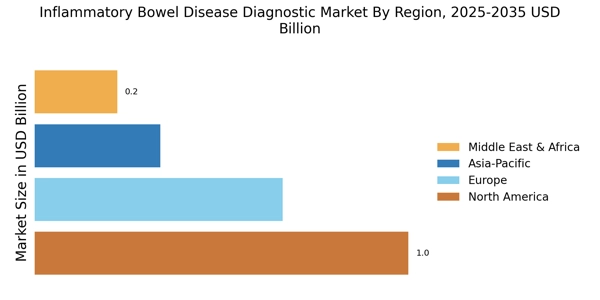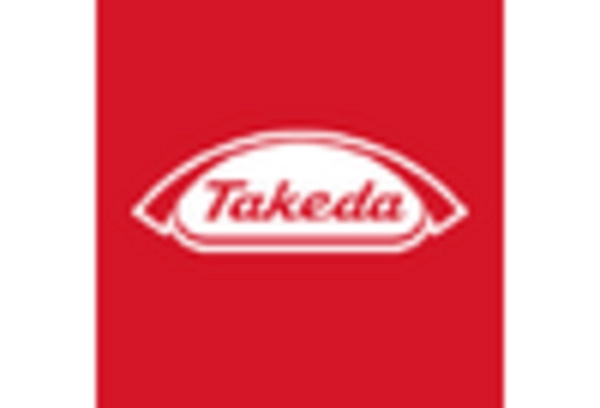Advancements in Diagnostic Technologies
Technological advancements play a pivotal role in shaping the Inflammatory Bowel Disease Diagnostic Market. Innovations such as next-generation sequencing, advanced imaging techniques, and biomarker discovery are revolutionizing the diagnostic landscape. These technologies enable more precise and rapid identification of IBD, facilitating better patient outcomes. For instance, the introduction of non-invasive tests has gained traction, allowing for earlier diagnosis without the need for invasive procedures. The market is projected to witness substantial growth as these advanced technologies become more widely adopted, enhancing the accuracy and efficiency of IBD diagnostics. The integration of these innovations is likely to drive competition among diagnostic providers, further propelling market expansion.
Rising Awareness and Education Initiatives
The increasing awareness of Inflammatory Bowel Disease among the general public and healthcare professionals is a crucial driver for the Inflammatory Bowel Disease Diagnostic Market. Educational initiatives aimed at informing patients about IBD symptoms and the importance of early diagnosis are gaining momentum. This heightened awareness encourages individuals to seek medical attention sooner, leading to increased demand for diagnostic services. Furthermore, healthcare providers are being trained to recognize the signs of IBD more effectively, which contributes to earlier diagnosis and treatment. As awareness campaigns continue to proliferate, the market for IBD diagnostics is expected to grow, reflecting the positive impact of education on patient outcomes.
Regulatory Support for Diagnostic Innovations
Regulatory support for innovative diagnostic solutions is a key driver for the Inflammatory Bowel Disease Diagnostic Market. Regulatory bodies are increasingly recognizing the importance of timely and accurate diagnostics in managing IBD. This has led to streamlined approval processes for new diagnostic tests and technologies, encouraging companies to invest in research and development. The favorable regulatory environment fosters innovation, allowing for the introduction of novel diagnostic tools that can significantly improve patient care. As regulatory frameworks evolve to support advancements in diagnostics, the market is likely to experience accelerated growth, driven by the introduction of cutting-edge solutions that address the needs of IBD patients.
Growing Investment in Healthcare Infrastructure
Investment in healthcare infrastructure is a significant driver for the Inflammatory Bowel Disease Diagnostic Market. Governments and private entities are increasingly allocating resources to enhance healthcare facilities and diagnostic capabilities. This trend is particularly evident in regions where the burden of IBD is rising. Enhanced healthcare infrastructure facilitates the implementation of advanced diagnostic technologies and improves access to diagnostic services for patients. As healthcare systems evolve, the demand for comprehensive diagnostic solutions is expected to grow, leading to an expansion of the IBD diagnostic market. The focus on building robust healthcare systems is likely to create opportunities for diagnostic companies to innovate and expand their offerings.
Increase in Prevalence of Inflammatory Bowel Disease
The rising incidence of Inflammatory Bowel Disease (IBD) is a primary driver for the Inflammatory Bowel Disease Diagnostic Market. Recent estimates indicate that the prevalence of IBD has been increasing steadily, with millions affected worldwide. This surge in cases necessitates improved diagnostic tools and methodologies, as timely and accurate diagnosis is crucial for effective management. The growing awareness of IBD among healthcare professionals and patients alike has led to heightened demand for diagnostic solutions. As the population ages and lifestyle factors contribute to the rise of IBD, the market for diagnostic services is expected to expand significantly, reflecting the urgent need for innovative diagnostic approaches.


















Leave a Comment